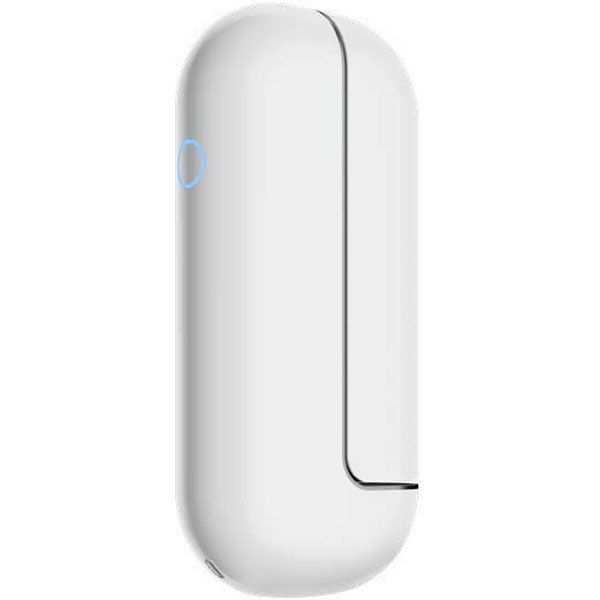
Refractor telescopes on computerized mounts combine classic stargazing elegance with cutting-edge technology. But when you place one on an automated mount, the magic begins. How? With built-in GoTo capabilities, these telescopes automatically slew to thousands of celestial targets, providing precision and convenience. This eliminates the need to search or guess about star formation in the dark. In short, computerized refractors and innovative telescopes answer the age-old question: “How can I see more with less effort?” Best Ultraportable? Best High-resolution? The answer is finally, thrillingly, here. This fusion is echoed in the rise of the Best Smart Telescopes in 2024.
Highlighted Products
Featured Product 1
By analyzing star patterns with your smartphone's camera, the Celestron StarSense Explorer LT 80AZ may lead you to cosmic wonders without needing Wi-Fi, batteries, or aggravation. Combining traditional stargazing with AR astronomy brings the night sky closer, creating an intimate and enchanting experience.
Featured Product 2
Have you heard about that Vespera II Adventure Bundle? It is an upgraded version of the original Vespera Smart Telescope. It offers first-rate performance thanks to its 50mm focal length and Sony IMX585 sensor with CovalENS capabilities. Using CovalENS, the sensor's resolution jumps to 8.3MP from 2MP and 24MP, respectively.
Featured Product 3
Vespera II is not just a telescope; it’s an innovative, autonomous astrophotography studio with a beautifully designed, ultra-portable feature. The Vespera II telescope, powered by the Vaonis Singularity app, uses a Sony IMX585 sensor with CovalENS technology for enhanced resolution and captures colorful images of large sky objects.
While the Vespera Smart Telescope and the Celestron StarSense Explorer LT 80AZ Refractor have very different price points and feature sets, they share a few key similarities, especially in simplifying stargazing through innovative technology. Both remove the complexity of star-hopping or manual sky navigation and guide you to your targets. Vespera and the StarSense Explorer LT 80AZ make astronomy easier by directing users to celestial objects through smartphones or smart tech.
More About This Category
The refractor telescope has been in use since it's invention in 1608, but today's refractors would amaze Galileo! Refractors are now available in a wide range of sizes and have multiple features that support their use as a visual astronomy instrument or a premiere telescope for astro-imaging.
Among the first telescopes, refractor models bend light using lenses to create a picture. For amateur and professional astronomers especially, these telescopes provide improved accuracy and simplicity of operation when matched with computerized mounts. Often known as GoTo mounts, computerized mounts have motors and software that automatically track and locate astronomical objects. Optical clarity combined with automation produces a potent observational astronomy and astrophotography instrument.
Is a refractor on a computerized mount suitable for astrophotography?
This mix is rather good for astrophotography. The refractor telescope's crisp optics and computerized mount's exact tracking make the long exposures required to photograph dim celestial objects possible.
The clean, high-contrast views of refractor telescopes are well known. This is mainly related to their construction, which avoids the typical problem in reflector telescopes by using lenses instead of mirrors, avoiding the necessity of a secondary mirror to block incoming light. Refractors are especially suited to observing planets, the Moon, and double stars—where contrast and detail are vital. The sealed tube design also shields the optics from dust and debris, extending their lifetime and lowering their demand for regular maintenance.
How do I align a computerized mount?
Most computerized mounts have an alignment process that involves pointing the telescope at a few known stars. The mount's computer then calculates its position and adjusts accordingly to track other objects in the sky.
Comparison With Other Mounts
Mostly in their degree of automation, computerized and conventional mounts differ. Conventional mounts—such as equatorial or manual alt-azimuth mounts—demand the user to find and track objects manually; automated mounts streamline these chores. This makes the observing procedure more exact and quick, especially for novices or during astrophotography sessions when accuracy is vital. Still, electronic mounts generally cost more than hand-made ones and run on batteries or another outside power source. Many astronomers believe that the advantages of simplicity of use, accuracy, and automation surpass the higher cost and complexity of computerized mounts.
Computerized mounts significantly improve user experience by automating the operation and transforming celestial tracking. Usually needing just a few bright stars, computerized mounts simplify alignment, unlike conventional alt-azimuth and equatorial mounts, which demand manual adjustments and frequently complicated installations. Specifically helpful for astrophotography, where lengthy exposures are necessary to capture dim objects, they automatically track objects as they move, adjusting for Earth's rotation. Whether installed on a computerized GoTo equatorial or alt-azimuth system, refractor telescopes provide flexibility for visual astronomy, astro-imaging, and even terrestrial application, perfect for novice and experienced astronomers.
One should also consider several additional telescope possibilities. For deep-sky studies, reflector telescopes have bigger apertures and are less costly. In the same line, catadioptric telescopes combine mirrors and lenses to provide a small form with versatile uses. Every kind of telescope has advantages; knowledge of these will enable you to select the ideal instrument for your love of astronomy.

Astronomy enthusiasts will find the Celestron Advanced VX 6" Refractor Telescope a flexible and very competent GoTo equipment. Its 6" aperture generates crisp, clear images of the solar system and distant space objects. The telescope boasts solid optical tube rings, a 2" Rack & Pinion focuser, and a sleek aluminum body. It features a 9x50 finderscope and a 20mm eyepiece; other ports let one attach other equipment. The AVX 6" Refractor provides rich, crisp, highly contrast vistas for visual astronomers and astrophotographers. Small targets will find its 1200mm focal length ideal, and the integrated 2" Rack & Pinion focuser guarantees precise focus.

Vaonis is unveiling the completely automated, portable Astrophotography Camera and Telescope, the Vespera II Smart Telescope. With a 50mm focal length and a Sony IMX585 sensor with CovalENS capability, this new model lets one enjoy the night sky from anywhere. The telescope is simple to operate via a power button to link to the stars and lets users share their celestial exploits with others via the associated Singularity app. Five automatic features—auto-initialization, auto-alignment, auto-tracking, and auto-focus—define the Vespera II. Using Covalens increases the resolution of 8.3MP and 24MP, unlocking intricate photos from the Sony IMX585 imaging sensor. Revealing the invisible, the Singularity app lets users access manual image processing, composition, framing, and live stacking techniques.

The Celestron 90 mm AstroFi Refractor Telescope is a fitting telescope operating via the free SkyPortal software for tablets or smartphones. It offers a wireless experience whereby users may automatically locate targets and touch the screen to slew the chosen object. Moreover, by generating its wireless signal, the telescope is easy to run even in far-off areas lacking strong WiFi or cellular access. Driven by Celestron's more than fifty years of optical technological expertise, the internal optics provide remarkable views of the Moon, planets, and nebulae. The telescope features 10mm and 25mm Kellner eyepieces, StarPointer Finderscope, and a diagonal mirror star.


